#100% Whole Wheat
Video
youtube
100% Whole Wheat - Daybreak (1978)
2 notes
·
View notes
Text
if you can eat bread without Problems i hope you are grateful also if you're ever thinking of giving up that ability or something uh hit me up. i don't have anything good to trade for it but i think it's my turn with the functional digestive system. pls. anyone?
#not to do a callout but [redacted] coffee shop is 100% lying abt their scones being gluten free#both times ive gone there it has ended so badly#also im rly unhappy abt like.. i was almost asymptomatic celiac for like 14-15 yrs and only in the last few yrs ive started getting sick#like when i was 11 my mother accidentally fed me wheat cereal and it took a few *months* of that to make me rly sick#i know most ppl w celiac have been in this boat the whole time but i rly did get to kind of brush it off for so many years. and now.. 🙃🙃#celiac#skravler
19 notes
·
View notes
Text
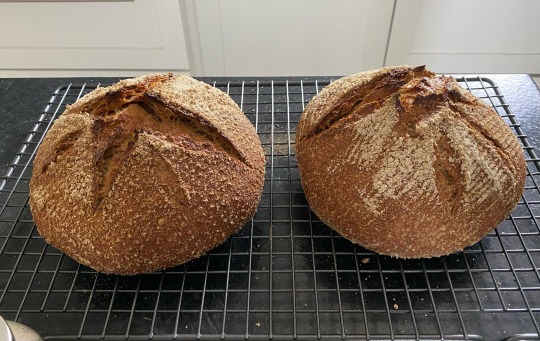
Bread day 🍞
13 notes
·
View notes
Text
Current pillar of sanity is trying to cook one recipe from one of my favorite cookbooks - “fresh from poland”- a day between my classes and homework
#Gonna try to Julie & julia this bitch. But like 80% not 100%#Made the Breton beans and one of the best vegetarian soup things of the like ive ever made#Up on the list was the whole wheat challah with almond strusel but my whole wheat flour was mildly/#Moldy*#Cooking#I think I’m going to try to do more focused cook-throughs of books I like instead of jumping wildly between
5 notes
·
View notes
Text
100% Whole Wheat Sandwich Bread

0 notes
Text
Buy Organic Whole Wheat Atta Online - Premium Organic Foods
Experience the wholesome goodness of ProNature Organic Whole Wheat Atta, a 5kg pack of 100% organic products. Nourish your body with the finest whole wheat atta for a healthier lifestyle.

#pro nature organic#natural products#organic foods#organic products#organic product#natural foods#natutal products#pro nature spices are 100% organic#healthy foods#healthy lifestyle#Organic Whole Wheat Atta Online
0 notes
Text
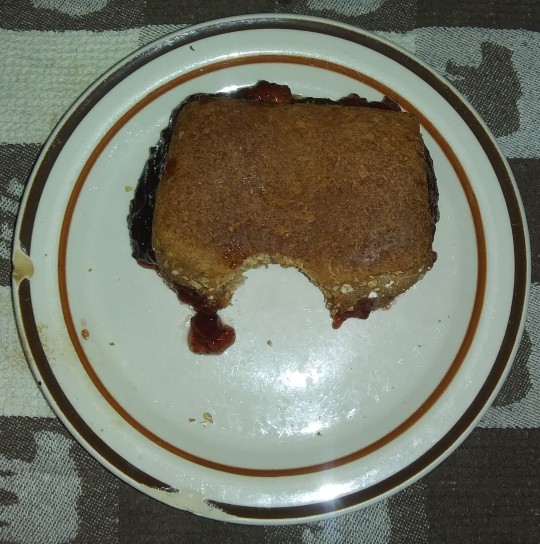





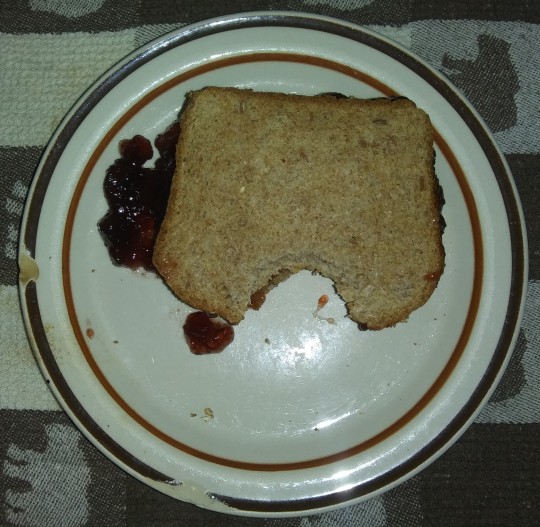

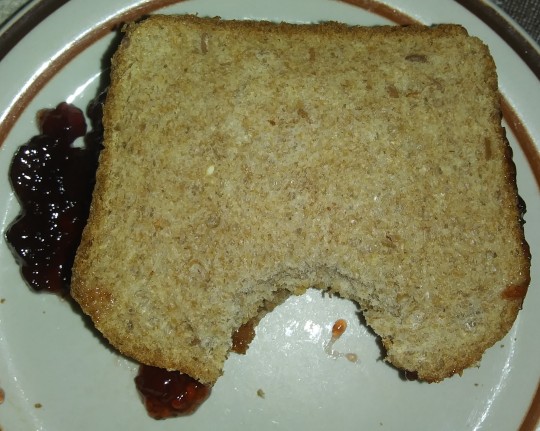
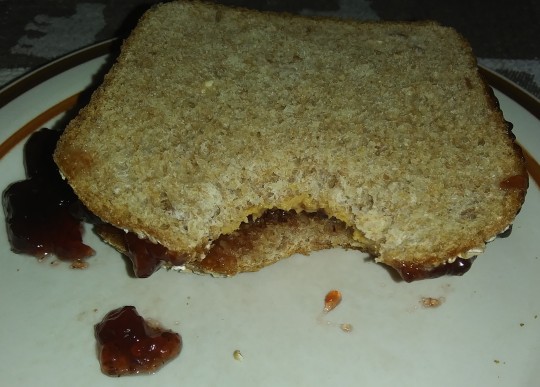

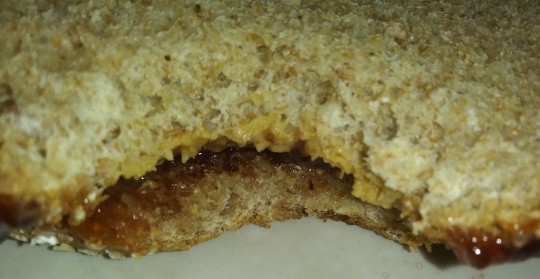
#Arnold #ArnoldWholeGrains100PercentWholeWheatSmallSlicedBread #SlicedWheatBreadReview
This is part 3 of the Arnold Whole Grains 100 Percent Whole Wheat Small Sliced Bread and it is the rest of the images.
0 notes
Text
100% Whole Wheat Sandwich Bread

0 notes
Text
Accidentally cured my PCOS by eating whole grains. Like I switched to whole wheat bread and my period is back.
#.txt#ironically due to my dad LMAOOO he spent so much time getting onto me about seeing a doctor for it#and then I started eating whole wheat bc his heart might've been part of why he passed so we were all collectively scared abt our health#so I switched to whole grains and literally within the week I got my period after 100+ days without it. and now I've got it again perfectly#on time??? WHOLE WHEAT ❤️❤️❤️❤️
0 notes
Text
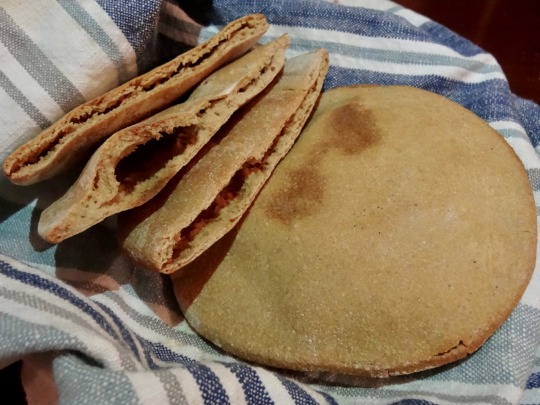
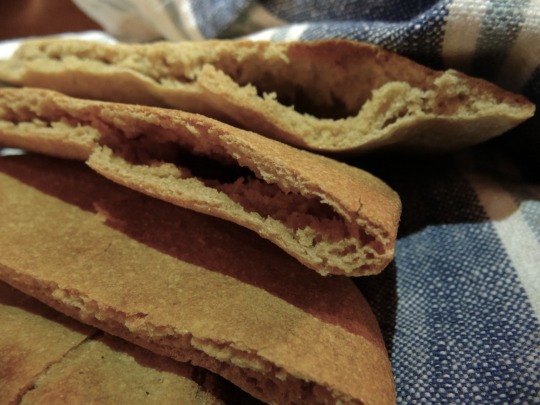
[ID: One puffy circle of bread, and three which have been halved to show an internal pocket, on a striped blue and white kitchen towel. End ID]
خبز الكماج / Khubiz al-kmaj (Palestinian flatbread)
Khubiz al-kmaj is a thin flatbread with an internal pocket. It is commonly eaten with breakfast to scoop up dips such as hummus, used to eat stews, served alongside main dishes, and used to make sandwiches and to wrap falafel. "خُبْز," pronounced "khubz" or (in Levantine varieties of Arabic) "khubiz," comes from the root خ ب ز (kh-b-z), which also produces the word "خَبَزَ" "khabaza" (Levantine: "خَبَز" "khabaz"), "to bake."
This bread is eaten across the Levant and in Greece, with slight differences in terminology and style. It is variously called "خُبْز العَرَبِيّ" (khubz al-'arabiyy; Arabian bread), "خُبْز "البَلَدِيّ (khubz al-baladiyy; bread from my country), or (occasionally) "خُبْز البيتة" or "البيتا" (khubz al-bita), a borrowing from "pita." ("Pita" itself is perhaps from Greek "πίτα" "pita," or the modern Hebrew "פיתה.") The bread is referred to as "khubiz al-kmaj" in Palestine, from the Turkic "kömeç" / كُمَجْ ("bread baked in ashes"). The collective term for the bread in general is كماج (kmāj); each individual piece of bread is referred to with the singulative "كماجة" (kmāja).
Today, kmaj is frequently made with white flour; some people add olive oil or milk powder to ensure a very soft dough. Leila el-Haddad writes that a more traditional method omits milk and uses whole white spring wheat, a whiteish wheat grain harvested in late spring and ground without removing the bran.
Since the late 20th century, many Palestinian households have used an electric cooker (طنجرة الكهرباء; ṭanjara al-kahrabā') to cook kmaj, placing one kmaja inside of the chamber and one on top and allowing both to bake at the same time. These aluminum and tin cookers, which were invented in Gaza and became popular there during the first intifada in the late 1980s, are designed to route electricity through a metal pipe or spiral wire on the underside of their lids, heating both the top and the inside of the cooker simultaneously.
The cookers' popularity can be attributed in part to a curfew that Israel imposed on Gazan refugee camps during the intifada, supposedly in an attempt to restrict the movements of resistance fighters. Refugees in the Jabalia camp in the north, for example, unable to afford home stoves, and without the necessary outdoor space to make familial clay ovens, would have to wait in line for hours every day to get bread from shared ovens, risking curfew violations; household electric cookers were far more convenient. The success of local industry and innovation in the form of Gazan-manufactured technology was also symbolically and strategically important during the first intifada, in which Palestinians employed strikes and boycotts (largely organized by women) of Israeli companies and goods as a strategy of resistance to occupation.
An electric cooker is still today considered a very important tool, as it spares families the need to purchase kmaj (the price of which was soaring compared to the cost of flour in the 2010s, and which was often of inferior quality compared to what could be made at home). They are frequently given as wedding or housewarming presents. Lack of access to electricity, though, imposes a limiting condition on the usage of these cookers, as Israel has for over a decade strangled the flow of power to Gaza: Abier Almasri wrote in 2017 that tasks such as cooking and laundry had to be rushed during the four or so hours a day when electricity was available. In this environment, electric cookers are useful in that they can prepare a lot of bread in a short period of time. Fathia Radwan said in 2022 that she would wake up early, after the nightly power outage, to prepare more than 100 loaves of bread at a time for her family of nine.
Today, the taxes that Israel levies on imports of raw materials into Gaza makes the cost of new electric cookers, which sometimes exceeds 120 shekels (37 USD), too expensive for some families to afford. The difficulty and expense of importing materials, and the impossibility of exporting goods to foreign markets with the advent of the 2007 siege, also limit the number of factories in Gaza that are able to manufacture these cooking pots. The aluminum industry, introduced to Gaza in the 1960s and once the basis of a manufacturing and economic renaissance in the region, deteriorated as a result of the siege, as factories were no longer able to export goods to the West Bank and were newly reliant on imports of raw materials from Egypt. Even parts to repair electric cookers are expensive, due to a tax levied on items judged by Israel to have a "dual," i.e. a possible civilian and military, use.
Still, repairman Iyad Faraj estimates that over half the homes in Gaza have and use an electric cooker, as maintaining, repairing, and operating one is cheaper than having a gas pipe installed (at 68 shekels, 20 USD) and purchasing gas. Electric pots thus stand in many homes as both a utilitarian item, and a symbol of Palestinian ingenuity and resistance to Israel's attempts at impoverishment and starvation.
Support Palestinian resistance by contributing to Palestine Action’s bail fund or to Palestine Legal’s defence fund, by attending court or making a sign to support the Elbit Eight, or by buying an e-sim for distribution in Gaza.
Ingredients:
500g (4 cups + 3 Tbsp) white whole wheat (spring) flour
1/2 Tbsp (5g) active dry yeast
1/2 Tbsp (6.25g) vegetarian granulated sugar
1/2 Tbsp (7.25g) kosher salt
About 2 1/4 cups (530mL) room-temperature water, divided
Olive oil
White whole wheat flour is flour that has a white color once ground, despite the fact that it includes both the bran and the germ of the wheatberry. It is milled from white spring wheat (so named because it is harvested in late spring).
You may instead mix white all-purpose flour and brown whole wheat flour in your desired proportion. Keep in mind that whole wheat flour will need more water and more kneading than white flour. If you’re using all white flour, you will need about 1 1/4 cup (300mL) water.
Instructions:
1. Mix flour, yeast, sugar, and salt in a large mixing bowl. Add water gradually until dry ingredients come together into a sticky dough.
2. Knead the dough on the countertop or in a wide, shallow bowl until smooth, about 5 minutes. (If using whole wheat or white whole wheat flour) continue incorporating water into the dough as you knead to maintain a tacky texture.
3. Fold the dough into a ball and return to the bowl, seam-side down. Pat the top of the dough with some olive oil, cover the bowl, and let rise for an hour.
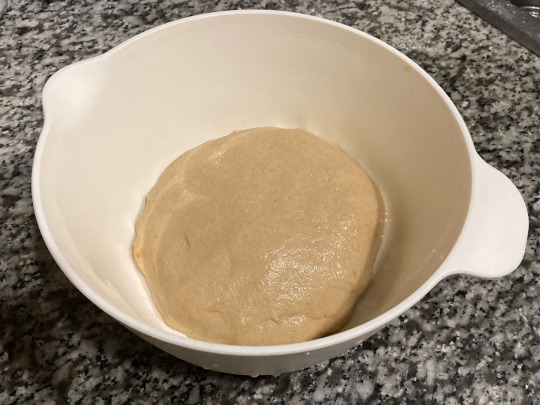

4. Pinch the dough into about 8 balls of equal size (about 110g each). Cover and let rest for 10 minutes.
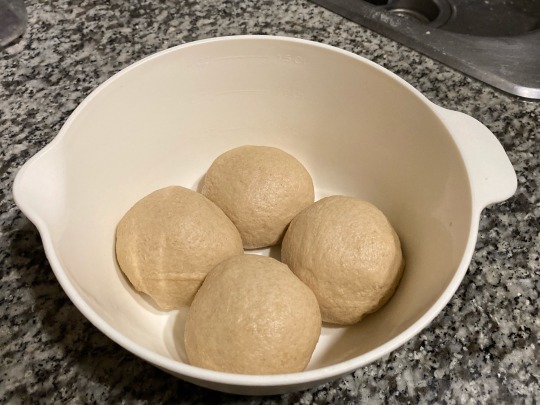
5. On a lightly floured surface, roll out each ball of dough into a circle about 1/4" (1/2cm) in thickness. Set dough circles on a surface prepared with parchment paper and cover closely with a kitchen towel or plastic wrap. Let rest and ferment for at least 1 and up to 10 hours.
An overnight rest is traditional in Palestine and will create a more complex flavor in the bread (see note below).
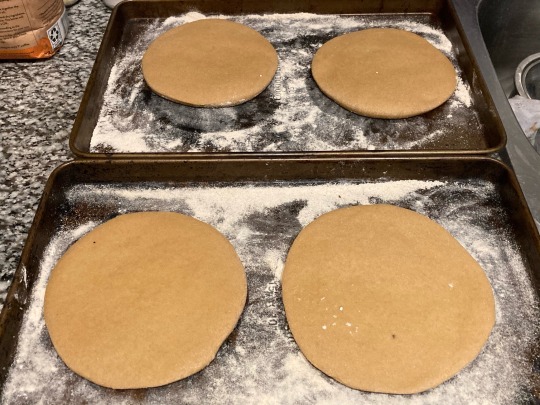
6. Remove each circle of dough from its resting place with a metal spatula and roll it out to a 1/4” thickness again. Preheat a baking stone or sheet in the top third of an oven at 500 °F (260 °C), and then cook breads in the oven for three minutes, until large bubbles have begun to form.

7. Flip bread over and cook for another 3 minutes on the other side, until golden brown and puffed up completely.
8. Wrap breads in a kitchen towel or tea towel and allow to steam for a few minutes while the others cook.
Notes
The climate where I live is dry enough that I have discovered a risk of my breads becoming crackers if I leave them out overnight. The dried-out flatbread does puff up in the oven, but the resulting product is not as nice and fluffy as it should be.
Through experimentation, I have found the best method of both preventing drying out and guaranteeing that the flatbreads will puff up during cooking the next day is:
1. Roll out the dough and place dough circles on a lightly oiled surface. Cover them closely with lightly oiled plastic wrap.
2. The next day, fold dough circles back into balls. Place seam-side down and roll out again on a lightly floured surface.
3. Bake as described above.
If you live in a humid environment, the first instructions given in the recipe above should work for you.
423 notes
·
View notes
Text
I though the GQP was opposed to Big Government? Not only do they want it in your bedroom (birth control, Don't Say Gay, Roe), they're now proposing to take over your kitchen. Consider:
No white grains — people can only purchase 100% whole wheat bread, brown rice and 100% whole wheat pasta.
No baked, refried or chili beans — people can purchase black, red and pinto beans.
No fresh meats — people can purchase only canned products like canned tuna or canned salmon.
No sliced, cubed or crumbled cheese. No American cheese.
Really?
1K notes
·
View notes




